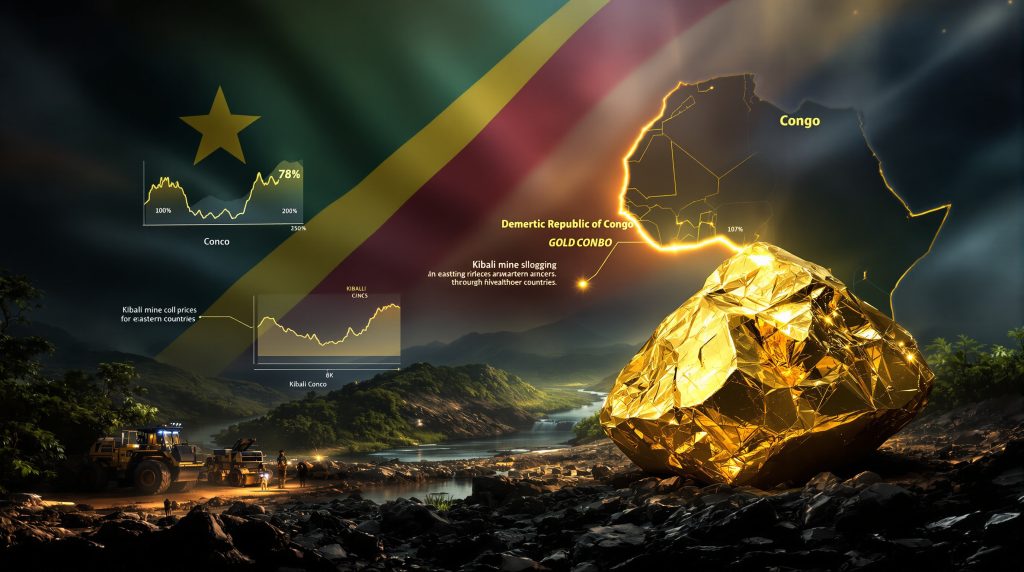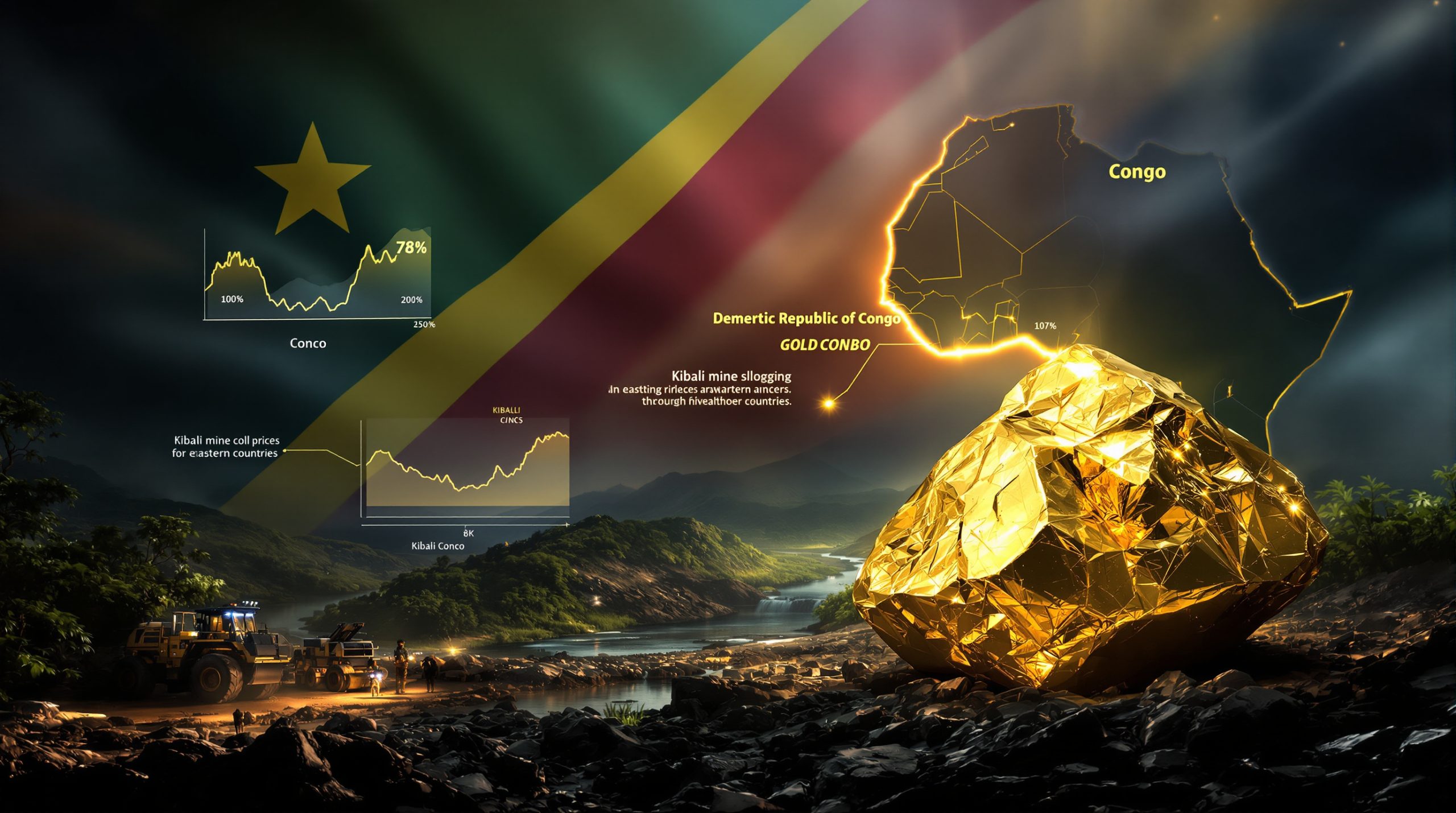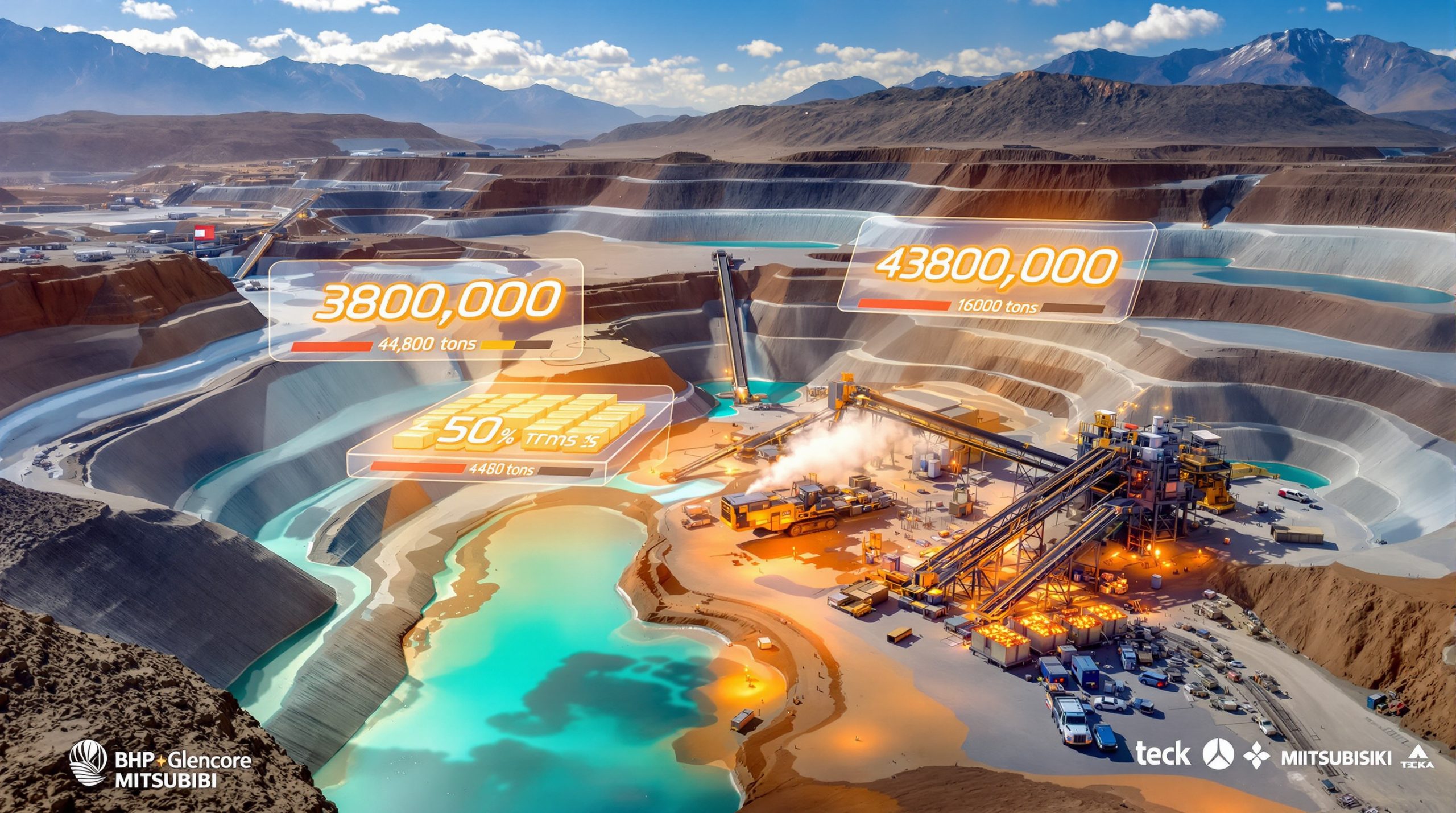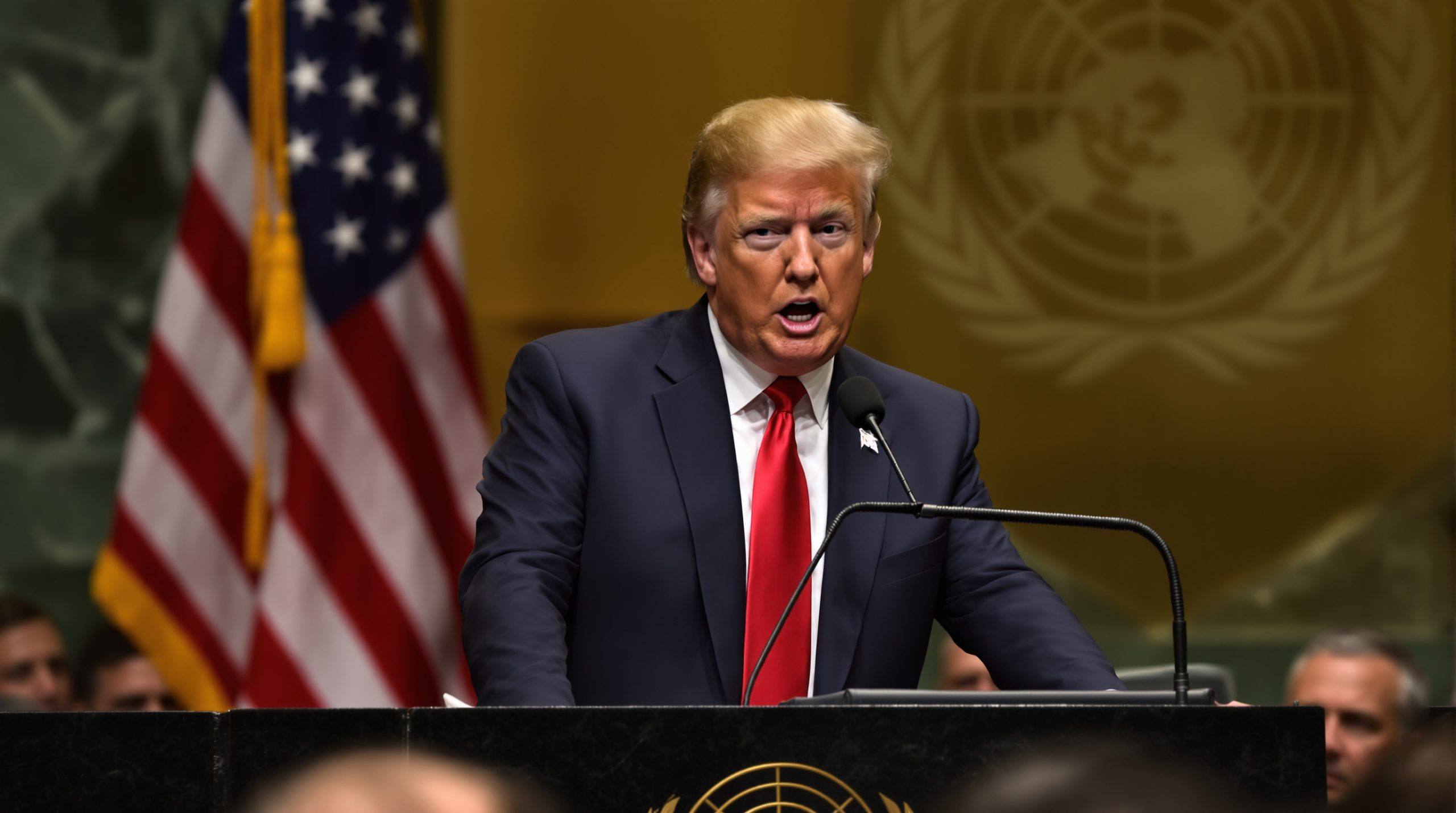Congo's Gold Mining Renaissance: Exploring New Projects Amid Record Prices
The Democratic Republic of Congo (DRC) is experiencing a significant transformation in its gold mining landscape, driven by record-high gold prices analysis and renewed government focus on formalizing the sector. With an estimated 60 tons of gold—worth approximately $7 billion at current prices—lost annually to smuggling, Congo's mining authorities are implementing strategic initiatives to develop new congo new gold mines and recapture this lost wealth.
Current State of Congo's Gold Mining Industry
The DRC possesses substantial gold reserves, yet faces persistent challenges in maximizing their economic potential. Despite being home to Africa's largest gold mine at Kibali, much of the country's gold production occurs through informal channels, particularly in the conflict-affected eastern regions.
Official gold production statistics reveal a striking discrepancy when compared with estimated actual extraction volumes. According to industry consolidation insights, formal channels capture less than 20% of the country's actual gold output, with the remainder flowing through illicit trade networks.
Security challenges in eastern mining regions continue to impact formal operations, with armed groups controlling significant portions of the artisanal mining sector. These groups exploit porous borders with Rwanda and Uganda to smuggle gold out of the country.
Infrastructure limitations further hamper development, with inadequate road networks, unreliable power supplies, and limited communications infrastructure creating operational hurdles for legitimate mining companies seeking to establish formal operations.
What Makes Kibali Mine a Model for Congo's Gold Future?
Kibali's Success Story and Expansion Plans
The Kibali gold mine stands as Congo's flagship gold operation and serves as a model for future development. Operated by Barrick Gold, this world-class asset continues to demonstrate the country's gold mining potential.
With production capacity exceeding 800,000 ounces annually, Kibali ranks among Africa's largest gold mines. The operation's impressive reserve base has been further strengthened through recent exploration activities that have extended the mine's productive life to 2040.
As a significant contributor to formal gold exports and tax revenue, Kibali demonstrates the economic impact possible when proper development occurs in Congo's gold sector. The mine's annual tax contributions exceed $170 million, providing critical revenue for national and provincial governments.
Technological innovation at Kibali showcases modern mining approaches, with its combination of open-pit and underground mining techniques optimizing resource extraction while maintaining operational safety standards.
Infrastructure and Community Development
Kibali's success extends beyond gold production to include comprehensive infrastructure development that benefits both the mine and surrounding communities.
The operation's power generation facilities, including hydroelectric plants, create self-sufficient energy infrastructure that ensures reliable operations while contributing to regional electrification efforts.
Regional development has been enhanced through substantial investments in road networks, educational facilities, healthcare centers, and other community infrastructure. These investments have transformed formerly isolated areas into connected economic zones.
Employment creation remains one of Kibali's most significant contributions, with extensive training and skills development programs enabling local workforce participation at all levels of the operation.
Which New Gold Projects Are Being Developed in Congo?
Emerging Gold Mining Operations
Several new gold projects are in various stages of development across the DRC, with Minister Watum indicating that "a few deals might be announced in the near future." These emerging operations aim to replicate Kibali's success while addressing the unique challenges of their respective regions.
Exploration activities have intensified in gold-rich provinces, particularly in North Kivu, South Kivu, and Haut-Uele. International mining companies are deploying modern exploration technologies to identify and delineate new gold resources with potential for commercial development.
Development timelines vary across projects, with some in early-stage prospecting while others approach construction decisions. The favorable gold price forecast environment has accelerated several projects that might otherwise have remained dormant.
Investment sources reflect a diverse array of market participants, combining established international mining houses with junior mining investments seeking to establish operations in Congo's gold-rich terrain.
Partnerships and Investment Frameworks
The DRC is actively seeking partnerships to develop its gold resources, engaging with both traditional mining investors and new market entrants.
International collaboration efforts include discussions with established mining companies and newcomers alike, with Minister Watum emphasizing that Congo "open[s] again space for newcomers as well" in the gold sector.
Various financing models are being considered for new projects, including joint ventures, production sharing agreements, and conventional equity/debt structures. These flexible approaches aim to accommodate different investor requirements while maximizing benefits to the Congolese economy.
Technical expertise from international partners represents a critical component of these collaborations, leveraging global mining experience to address Congo's unique operational challenges.
How is Congo Addressing Gold Smuggling and Informal Mining?
Combating Illegal Gold Exports
With an estimated 60 tons of gold lost annually to smuggling networks, Congo is implementing measures to formalize the sector and capture this lost revenue.
Traffickers utilize established transit routes through Uganda and Rwanda, with the United Arab Emirates serving as the primary destination market. These smuggling networks operate with sophisticated logistics, exploiting regional transportation infrastructure and porous borders.
The economic impact of this illicit trade is staggering, with potential value exceeding $7 billion annually at current gold prices. This represents a transformative revenue source that could significantly boost Congo's development if captured through formal channels.
Enforcement challenges stem from limited governmental capacity to monitor remote mining areas, many of which remain under the influence of armed groups rather than state authorities.
Formalization Initiatives
The government is pursuing several strategies to bring informal gold mining into the formal economy, recognizing that outright prohibition is impractical given the sector's economic importance to local communities.
Updated mining regulations for artisanal operations aim to create workable legal frameworks for small-scale miners, balancing environmental protection with economic opportunity. These frameworks include simplified registration processes and adapted taxation structures suited to artisanal operations.
Traceability mechanisms are being implemented to verify legal production origins, helping to distinguish legitimate artisanal gold from conflict-sourced material. These certification systems align with international due diligence requirements while remaining implementable in Congo's challenging operational context.
Creating legitimate market access for small-scale miners represents a critical component of formalization efforts. By establishing authorized buying centers in mining regions, authorities aim to provide competitive alternatives to illicit traders while ensuring proper documentation and taxation.
What Role Will International Partnerships Play in Congo's Gold Sector?
US-Congo Minerals and Infrastructure Agreement
Minister Watum has indicated that discussions with the United States on a minerals, infrastructure, and security deal are "quite advanced," potentially opening new avenues for investment in Congo's gold sector.
The framework development process involves establishing bilateral cooperation mechanisms that address both countries' strategic interests. For the United States, securing access to critical minerals represents a priority, while Congo seeks infrastructure investment and security cooperation.
Business-to-business opportunities will emerge once government-level agreements are finalized, with Minister Watum noting that "it's going to be a lot more business-to-business discussions with US companies" following framework establishment.
Security cooperation components address a critical prerequisite for mining investment, particularly in eastern regions where persistent instability has deterred formal sector development.
Diversification of International Partners
Beyond traditional mining investors, Congo is exploring relationships with various international partners to develop its gold resources.
High-level diplomatic engagement has expanded beyond Western partners to include discussions with countries across Africa, Asia, and the Middle East. This multipolar approach aims to maximize investment options while avoiding over-dependence on any single international partner.
Investment diversity is being actively encouraged, with authorities seeking participation from various global regions to bring different perspectives and approaches to Congo's gold sector development.
Technology transfer represents a key benefit sought from these international partnerships, with authorities prioritizing relationships that bring advanced mining techniques and processing technologies to Congo's gold industry.
What Challenges Must Be Overcome for Congo's Gold Sector to Flourish?
Security and Governance Issues
The eastern DRC, home to significant gold deposits, continues to face security challenges that impact mining operations and deter potential investors.
Armed groups maintain a persistent presence in mineral-rich areas, particularly in North and South Kivu provinces. These groups often control informal mining operations, using mineral revenues to finance their activities while creating insecure conditions for formal sector development.
Governance gaps stemming from limited state presence in remote mining regions create regulatory vacuums where illegal activities flourish. Extending effective governmental authority to these areas represents a prerequisite for sector formalization.
Corruption risks must be addressed through transparent management frameworks for resource revenues. Improved accountability mechanisms are essential for ensuring that gold sector development benefits the broader Congolese population rather than being captured by narrow interests.
Infrastructure Deficits
Inadequate infrastructure remains a significant obstacle to gold sector development, particularly in remote regions where substantial resources remain untapped.
Limited road and rail access to mining areas increases operational costs and complicates logistics for both construction and production phases. The challenging terrain in many gold-rich regions further exacerbates these transportation challenges.
Insufficient reliable power for processing operations represents another critical constraint, with many potential mining areas lacking connection to national electricity grids. Self-generation requirements increase capital costs and operational expenses for new projects.
Communication systems need improvement to support modern mining operations, with limited connectivity in remote regions hampering everything from safety systems to production monitoring and corporate reporting.
How Are Environmental and Social Considerations Being Addressed?
Sustainable Mining Practices
As Congo develops new congo new gold mines, environmental and social governance (ESG) considerations are increasingly important for both regulatory compliance and international market acceptance.
Environmental impact assessments are required for all new mining projects, with particular attention to water resource protection, biodiversity conservation, and pollution prevention. These assessments must address both construction and operational phases, including eventual mine closure.
Rehabilitation planning has become a standard requirement for new project approvals, with provisions for progressive restoration throughout mine life and comprehensive post-mining land restoration. Financial guarantees for rehabilitation are increasingly mandated to ensure completion regardless of operator financial status.
Water management protocols receive particular scrutiny in project reviews, with authorities focusing on protecting watersheds from mining impacts through strict discharge standards and monitoring requirements.
Community Engagement
Successful gold mining development requires positive community relationships, with social license to operate recognized as a critical success factor for new projects.
Benefit-sharing mechanisms are being formalized to ensure local communities gain from mining activities in their regions. These include local content requirements, community development funds, and formalized consultation processes for project planning and operation.
Employment opportunities prioritizing local hiring and skills development create direct economic benefits for communities hosting mining operations. Leading companies are implementing apprenticeship programs and educational partnerships to maximize local participation across operational roles.
Social investment initiatives supporting community infrastructure and services complement direct employment benefits, with healthcare facilities, educational institutions, and water/sanitation systems frequently included in community development agreements.
What is the Economic Outlook for Congo's Gold Mining Sector?
Market Conditions and Investment Climate
With gold prices near historic highs, the economic case for developing Congo's gold resources is compelling despite the operational challenges inherent to the region.
The price environment, with gold trading around $3,780 per ounce as of September 2025, enhances project economics significantly. Current prices provide substantial margins over production costs, even in challenging operating environments with higher security and infrastructure expenses.
Attractive potential returns on investment exist for well-structured projects, particularly those with strong ore grades. Industry analysts note that Congo's geological potential often compensates for its operational challenges when gold prices remain elevated.
Economic diversification through gold sector development complements Congo's existing mineral production profile, which has historically been dominated by copper and cobalt. This diversification provides resilience against price volatility in any single commodity market.
Revenue Generation Potential
Expanded gold production could significantly impact Congo's economy through multiple channels, transforming development trajectories in mining regions while contributing to national economic growth.
Export earnings could increase dramatically if even half of currently smuggled gold were captured through formal channels. At current prices, this would represent more than $3.5 billion in additional annual exports, significantly improving Congo's trade balance.
Tax revenue growth would accompany increased formal production, with royalties, corporate income taxes, and various fees generating substantial fiscal contributions. These revenues could fund critical infrastructure and social services if effectively managed.
Economic multiplier effects through supply chains and services create broader economic benefits beyond direct mining operations. Each formal sector mining job typically generates 3-5 additional jobs in supporting industries and services.
How Does Congo's Gold Strategy Fit with Its Broader Mining Vision?
Integration with Other Mineral Sectors
Congo's gold development strategy complements its position as a major producer of copper, cobalt, and other minerals, creating synergies across its natural resource portfolio.
Diversification benefits reduce Congo's macroeconomic dependence on copper-cobalt market cycles, providing more stable revenue streams through commodity price fluctuations. Gold prices often move counter-cyclically to industrial metals, enhancing this stabilizing effect.
Shared infrastructure investments across mineral sectors create efficiency gains and cost advantages. Roads, power generation facilities, and other infrastructure developed for one mining subsector frequently benefit operations in other minerals.
Regulatory harmonization across mineral categories simplifies compliance for multi-commodity operators while ensuring consistent governance standards. This harmonized approach enhances administrative efficiency while reducing regulatory arbitrage opportunities.
Dispute Resolution and Sector Stability
Minister Watum has emphasized resolving longstanding disputes with major mining companies to create a stable investment environment conducive to long-term development.
His negotiation approach reflects a preference for settlement over expropriation, noting that "expropriating assets from their operators is a right signal to send to the world." This stance aims to rebuild investor confidence after periods of regulatory uncertainty.
Accountability mechanisms ensure companies fulfill their obligations while providing predictable operating environments. The minister balanced his conciliatory approach by emphasizing that companies "need to discharge on their obligations."
Regulatory predictability represents a cornerstone of Congo's current mining strategy, with authorities seeking to establish clear frameworks that support long-term investment decisions while ensuring fair returns to the state.
What Are the Long-Term Prospects for Congo's Gold Mining Industry?
Future Development Scenarios
Congo's gold sector has significant growth potential over the coming decades, with geological endowment supporting substantial production expansion under appropriate investment conditions.
Production growth could potentially position Congo among Africa's top-tier gold producers if security and infrastructure challenges are adequately addressed. Industry analysts suggest potential for tripling current formal production levels within a decade under favorable conditions.
Value addition opportunities through in-country refining and processing could capture additional economic benefits from gold production. Preliminary discussions are underway regarding potential refining facilities that could serve both Congo and neighboring countries.
Formalization progress is expected to continue gradually, bringing increasing portions of informal production into regulated channels. This evolution will likely occur incrementally rather than through abrupt transitions that might disrupt livelihoods.
Sustainability and Legacy Planning
Long-term success requires planning beyond immediate production goals to ensure mining contributes to lasting development rather than creating boom-bust cycles.
Skills development programs building local technical and management capacity represent critical investments in Congo's human capital. These initiatives create enduring value that persists beyond individual mine lifespans.
Economic diversification using mining revenues to develop other sectors provides resilience against resource depletion and commodity price fluctuations. Agricultural development, manufacturing, and services represent priority areas for such diversification efforts.
Environmental stewardship approaches increasingly focus on mining industry trends and potential positive contributions to sustainable development rather than merely minimizing negative impacts. Rehabilitation to higher-value land uses and renewable energy investments represent examples of this evolving approach.
FAQ: Congo's Gold Mining Sector
How much gold does Congo currently produce officially?
Congo's official gold production is significantly lower than actual extraction due to widespread informal mining and smuggling. Official statistics capture only a fraction of the estimated 60+ tons produced annually, with formal channels recording less than 20% of total production. This discrepancy represents both a challenge and an opportunity for Congo's mining authorities.
Who are the major gold mining companies operating in Congo?
Barrick Gold operates the Kibali mine, Congo's largest formal gold operation. Other international and junior mining companies are exploring and developing additional projects across the country, though specific announcements of new operations are expected in the coming months rather than being publicly confirmed at present.
What makes Congo attractive for gold mining investment?
Congo's geological potential, with substantial unexplored gold reserves, combined with high gold prices creates compelling investment opportunities despite operational challenges. Many gold-bearing regions have seen limited modern exploration, creating significant discovery potential for companies willing to navigate the complex operating environment.
How does artisanal gold mining impact Congo's formal gold sector?
Artisanal mining dominates Congo's gold production but operates largely outside formal channels, creating challenges for regulation, taxation, and environmental management. This informal sector supports hundreds of thousands of livelihoods while simultaneously complicating efforts to establish formal mining operations in certain regions.
What infrastructure improvements would most benefit Congo's gold sector?
Transportation networks (roads, rail), reliable energy supply, and telecommunications would significantly enhance the viability of formal gold mining operations. Power infrastructure represents a particularly critical need, as processing facilities require substantial reliable electricity that is currently unavailable in many gold-rich regions.
Disclaimer: This article contains forward-looking statements regarding mineral development projects and economic forecasts. Such projections involve inherent uncertainties and risks. Readers should conduct their own due diligence before making investment decisions based on information presented.
Ready to Invest in the Next Major Gold Discovery?
Don't miss out on lucrative gold investment opportunities in emerging markets like Congo! Visit Discovery Alert's discoveries page to understand how major mineral discoveries can generate substantial returns, powered by our proprietary Discovery IQ model that transforms complex mining data into actionable insights.




